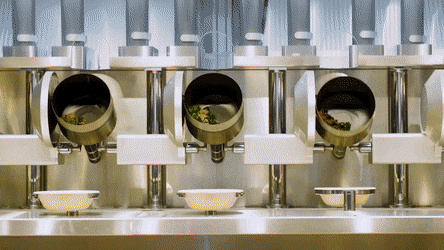Packaging Automation Stands the Heat, Gets Into the Kitchen
November 06, 2018

Packaging automation is where Ernest and Robocop meet. We’re busting the crime of an inefficient warehouse and solving the problem with slick tech! Introducing automated services to the manufacturing chain can solve a lot of pain points behind the scenes, but the benefits become evident to the end consumer, as well. Let’s step into the kitchen and see how automation is helping a Boston restaurant serve up a better customer experience.
While our automated pal Flippy serves up burgers, his robo-siblings over at Spyce are dedicated to healthier offerings. When you walk into the restaurant, you’ll interface with electronics right away by entering your order on a touchscreen. Sending a request back to the kitchen for a salad or grain bowl activates the entirely automated kitchen designed by graduates from MIT.

Spyce’s culinary bots can perform simple tasks, like adding peas or chicken to your bowl and heating the meal to its intended temperature. Professional chef Gavin Kaysen is an investor in the restaurant, and says “Their use of innovative technology and engineering to deliver a consistent, reliable product is driven by the desire to best service their guests.”
Aside from savoring the flavor of a delicious bowl of healthy grains, guests also enjoy two of the greatest aspects of automation: reduced costs and better reliability. Since Spyce only employs a handful of people at the front of the house, labor costs are relatively low. Meal prices start at $7.50, and the automated kitchen is guaranteed to prepare your bowl in three minutes or less.
In the world of packaging automation, improving reliability and cost savings have obvious benefits to your organization. It also helps you better serve your customers by ensuring your product arrives on time and undamaged. So if time is money, then saving time AND money means…

When our client Boman Kemp approached us to iron out some wrinkles in their manufacturing process, we introduced them to packaging automation that would get the job done. Not only did the solution help them prevent damaged products, but they expect it to pay for itself within 18 months. See how packaging automation saved the day in our case study: Ernest Equips Boman Kemp for Success.


